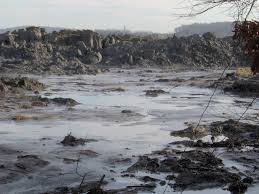Lovemore Lubinda|Zimnews
Zimbabwe is at high risk from mercury contamination, after studies reveal that is being used by an estimated 1.5 million small scale miners, with calculations done proving that more than 50 tons of mercury is being used annually in gold processing.
In a speech read on her behalf by Catherine Mavheneka, the Director of Finance and Administration in the Ministry of Environment Water and Climate, minister Oppah Muchinguri said it was identified that gold stamps milling centres were the main centres of mercury pollution, the deadly chemical was found in the air, sediments, and soil with the largest concentration found in the air.
“Studies have revealed that 70 percent of miners involved with amalgam burning were poisoned with mercury while women and children, some of them not working with mercury were also found to be either poisoned with elevated mercury levels in their bodies. High levels of mercury were found in breast milk in the Kadoma Chakari area, which unduly exposes breast feeding infants.”
“A large number of school going age and women of child bearing age are already intoxicated or with elevated levels of mercury in their bodies. About 69 percent of children working with mercury and 33 percent not working with mercury had chronic mercury intoxication,” she said at a workshop on mercury held at Rainbow Towers today, which is running 3 days.
The minister indicated that the government is cognisant of the fact that this inception workshop is a culmination of a series of efforts that seek to protect human health and the environment from the adverse effects of mercury exposure. “In view of the threats posed by this deadly chemical the international community developed the Minamata Convention on mercury to which Zimbabwe is a signatory in order to find a lasting solution of mercury related problems, as well as efficient use of mercury in various sectors.
Mercury is a heavy metal that is widespread and persistent in the environment, and is a naturally occurring element, and can be released in the air, land water through weathering of rock containing mercury ore or through human activities such as industrial processes, mining, waste incineration, and burning of fossil fuels.
Mercury can also be released from a number of mercury-containing products, including dental amalgam, electrical appliances such as switches, fluorescent lamps, laboratory, and medical instruments like clinical thermometers, barometers, batteries, skin lightening creams among others.
The minister said this Minamata Initial Assessment Project is one of the steps being taken by government towards the ratification of the convention, aimed at facilitating the early implementation of the convention by proving key national stakeholders in the country with the scientific and technical knowledge as well as tools needed.
The Minamata Convention is an internationally binding agreement designed to protect human health and the environment from anthropogenic emissions and release of mercury compounds.













